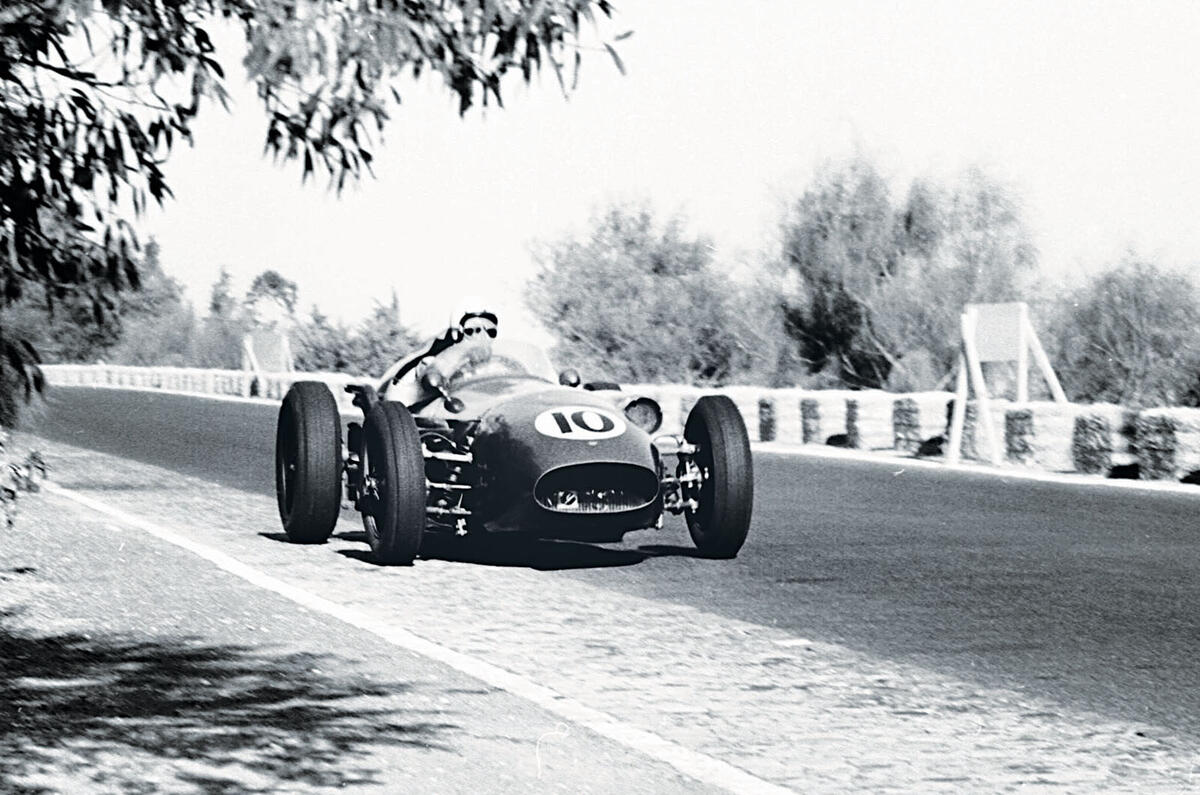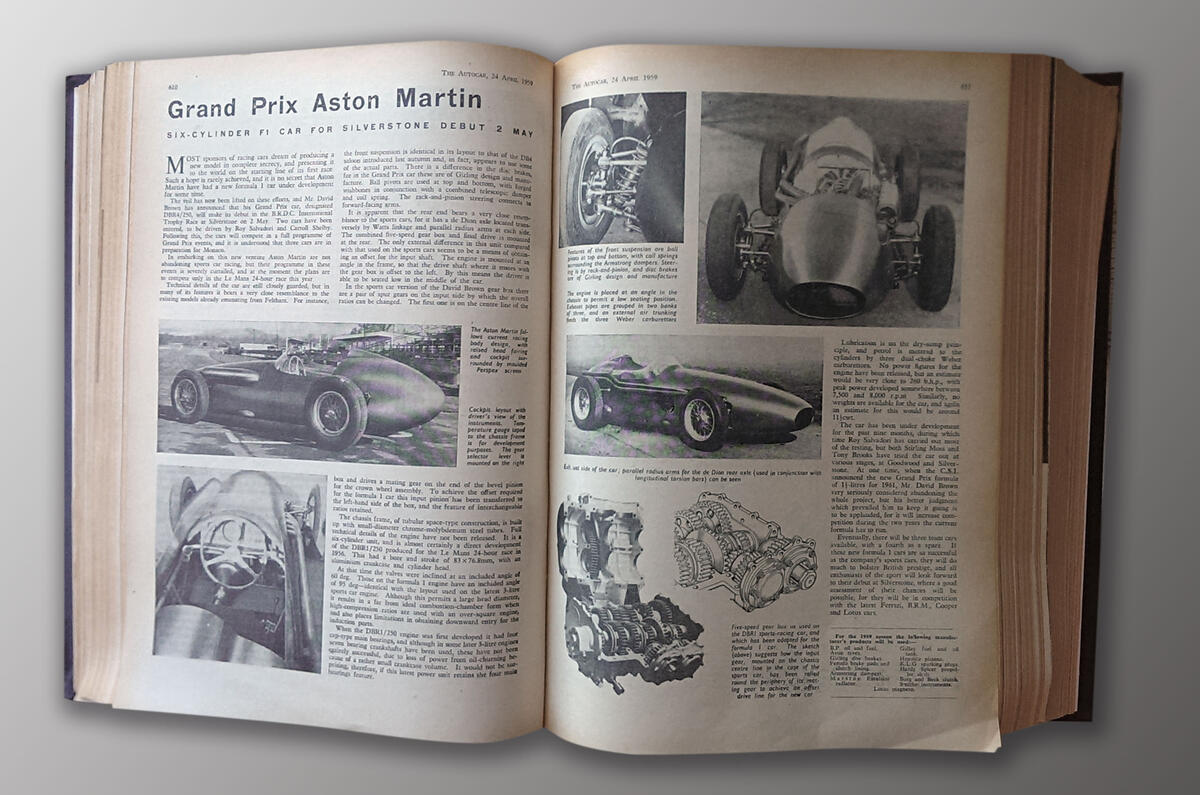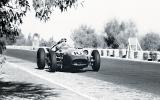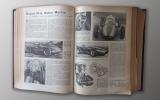Aston Martin is so symbiotic with sportscar racing that its shortlived foray into Formula 1 is rarely recalled – hardly surprising, given that the project epically underachieved compared with the manufacturer’s exploits in endurance racing.
Due to sportscar racing commitments, the development programme for David Brown’s grand prix car, the DBR4/250, was lengthy and stuttering. It took at least three years to move from a germ of an idea to reality, but by the middle of 1958 the likes of Roy Salvadori, Stirling Moss and Tony Brooks were testing it.
In fact, it was something of a surprise that the DBR4/250 got built at all, because during its gestation motorsport’s governing body, the CSI, announced a sea change in F1.
Autocar reported: “At one time, when the CSI announced the new grand prix engine formula of 1.5 litres for 1961, David Brown seriously considered abandoning the whole project, but his better judgment which prevailed him to keep it going is to be applauded, for it will increase competition during the two years the current formula has to run.”
So Aston Martin trimmed down its sportscar programme for the 1959 season, concentrating on Le Mans (which it won with the DBR1), and ploughed its efforts into single-seaters.
“Technical details of the car are still closely guarded, but in many of its features it bears a very close resemblance to the existing models already emanating from Feltham,” wrote Autocar. “For instance, the front suspension is identical in its layout to that of the DB4 introduced last autumn and, in fact, appears to use some of the actual parts.
“It is apparent that the rear end bears a very close resemblance to the sportscars, for it has a de Dion axle located transversely by Watts linkage and parallel radius arms at each side. The combined five-speed gearbox and final drive is mounted at the rear.
“The chassis frame, of tubular space-type construction, is built up with small-diameter chrome-molybdenum. The front-mounted 2493cc straight six engine is sleeved down from the 3.7-litre unit used in Aston’s road cars.”
Aston Martin didn’t release an official power figure for the engine but estimated it at “very close to 260bhp, with peak power developed somewhere between 7500 and 8000rpm”.
The DBR4/250 made its debut in the non-championship BRDC International Trophy Race at Silverstone on 2 May 1959. Salvadori claimed a promising second place, but the result was a false dawn. The car never looked like a winner in subsequent grand prix outings, proving too heavy and underpowered, with the claimed power figure regarded as optimistic by many observers. By this point, several F1 teams had also discovered the benefits of mounting the engine behind the driver, and cars from Lotus and Cooper made the Aston Martin look somewhat dated.
The DBR4/250 was evolved into the DBR5 for 1960, but it became increasingly clear that juggling F1 and sportscar racing was too much for Aston Martin. After one uncompetitive outing at Silverstone, the project was cancelled and Aston retrained its focus on sportscar racing.







Add your comment